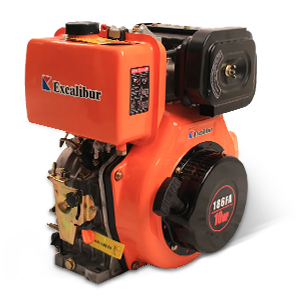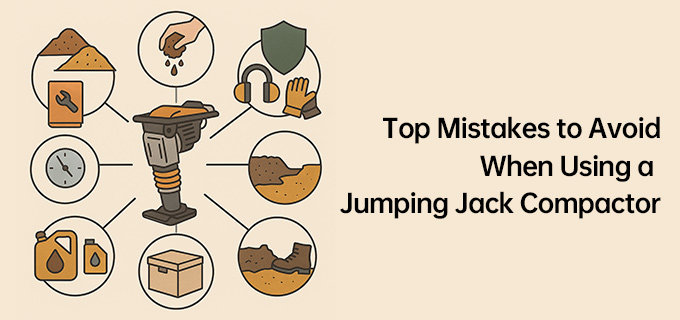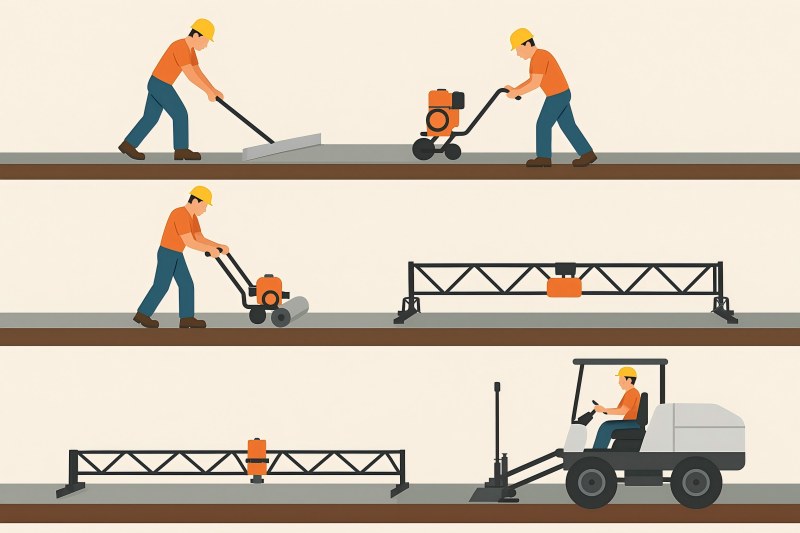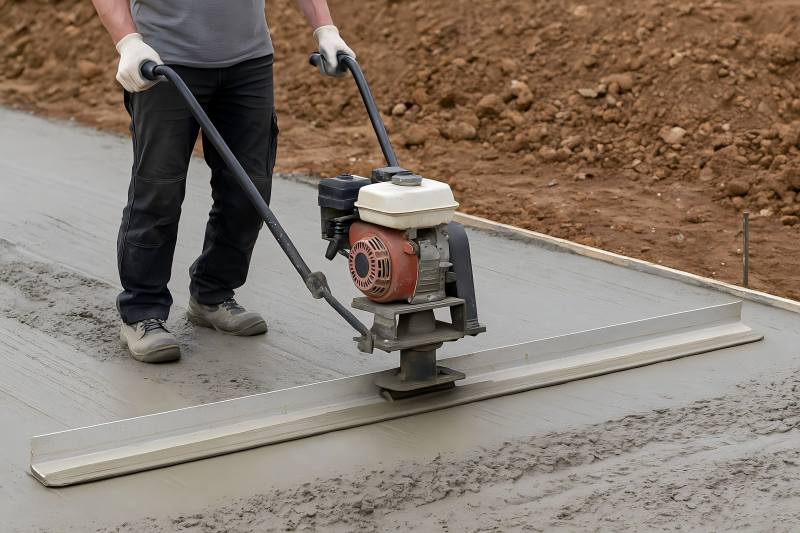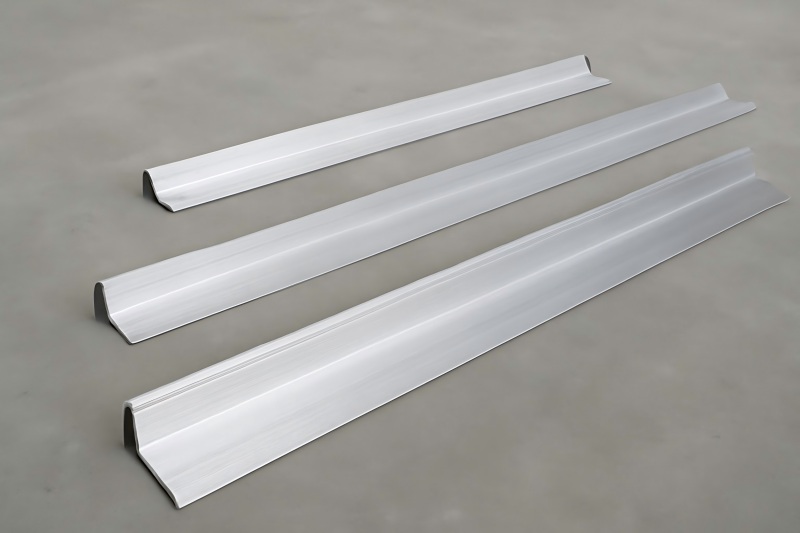Jumping jack compactors—also called tamping rammers—are essential equipment in construction, landscaping, and roadwork. They are built to compact cohesive or semi-cohesive soils effectively, especially in tight areas like trenches and along foundation edges.
However, despite their robust design and ease of use, improper handling or misuse can significantly reduce their efficiency, damage the machine, or even lead to safety hazards.

Choosing the Wrong Type of Soil
Mistake:
Using a jumping jack compactor on unsuitable soil types like granular soils (sand, gravel) instead of cohesive soils (clay, silt).
Why It’s a Problem:
Jumping jack compactors are designed for high-impact compaction, best suited for cohesive soils with high moisture content. When used on granular soils, the compaction is uneven and inefficient.
Data Insight:
According to Caterpillar’s soil compaction guidelines, rammers achieve optimal compaction depth (up to 24 inches) in cohesive soils with moisture content around 15%–20%. In contrast, vibratory plate compactors perform better on granular materials.
Tip:
Evaluate soil type before selecting your compaction equipment. Use jumping jacks only on moist clay, silt, or similar soils.

Improper Moisture Content
Mistake:
Operating the compactor on soil that is either too wet or too dry.
Why It’s a Problem:
Too much moisture reduces soil density and leads to “pumping” (surface bouncing without compaction), while too little moisture prevents soil particles from bonding.
Optimal Moisture Range:
- Clay soils: 15%–20% moisture
- Silty soils: 10%–15% moisture
Data Insight:
A study by the U.S. Army Corps of Engineers found that compaction efficiency drops by over 40% if moisture is 10% above or below optimum levels.
Tip:
Perform a field moisture test (e.g., the “ball test” or a moisture meter) before compacting.
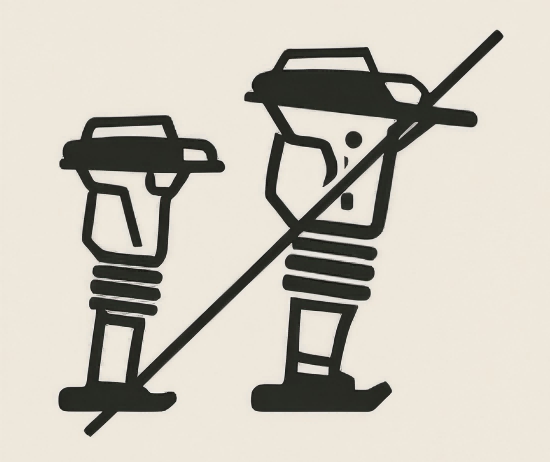
Incorrect Compactor Size and Model
Mistake:
Using a jumping jack compactor that is too small or too large for the application.
Why It’s a Problem:
An underpowered unit will not compact deeply enough, while an oversized rammer may cause over-compaction, damaging surrounding structures.
Real-World Example:
For trench backfill near pipelines, using a 60–70 kg jumping jack with 10–12 kN impact force is appropriate. Using a 90 kg unit may risk utility damage.
Data Table – Typical Jumping Jack Specs:
| Model Type | Weight (kg) | Impact Force (kN) | Stroke Height (mm) | Compaction Depth (mm) |
| Light-duty Rammer | 50–60 | 10–12 | 30–50 | 300–400 |
| Medium-duty Rammer | 60–70 | 13–15 | 40–60 | 400–500 |
| Heavy-duty Rammer | 75–90 | 16–18 | 60–80 | 500–600 |
Tip:
Choose your compactor based on soil type, trench depth, and proximity to sensitive infrastructure.
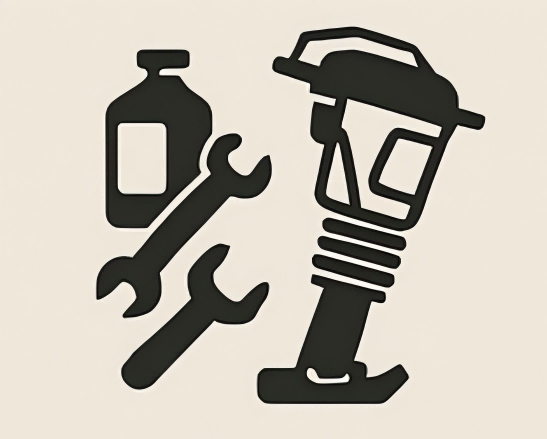
Poor Maintenance Practices
Mistake:
Neglecting basic maintenance such as oil changes, air filter cleaning, or checking for fuel leaks.
Why It’s a Problem:
Improper maintenance causes engine failure, reduced impact force, and unsafe operation.
Maintenance Data:
- Engine oil: Change after every 50 hours of use.
- Air filter: Clean every 8–10 hours in dusty environments.
- Fuel tank: Check daily for leaks and contamination.
Tip:
Follow the manufacturer’s maintenance schedule. Keep a log of service intervals.
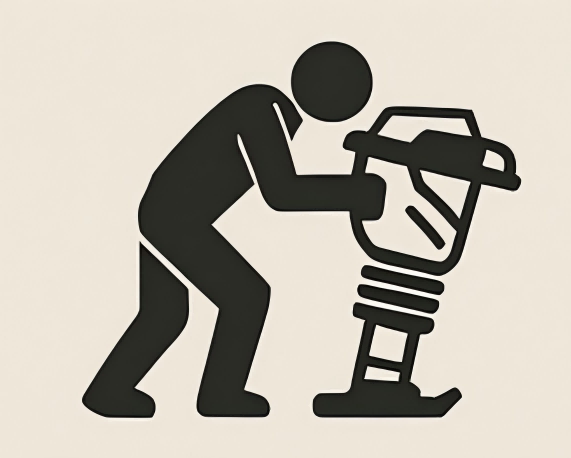
Incorrect Handling and Posture
Mistake:
Using the wrong body posture, pushing too hard, or letting the compactor bounce uncontrollably.
Why It’s a Problem:
Improper handling can lead to operator fatigue, muscle strain, or even loss of control, increasing the risk of injury.
Ergonomic Tip:
Let the rammer do the work. Gently guide the handles and maintain a slight forward lean. Do not force the machine forward.
OSHA Insight:
According to OSHA, musculoskeletal disorders account for 33% of all worker injuries in construction, many of which are related to improper equipment handling.
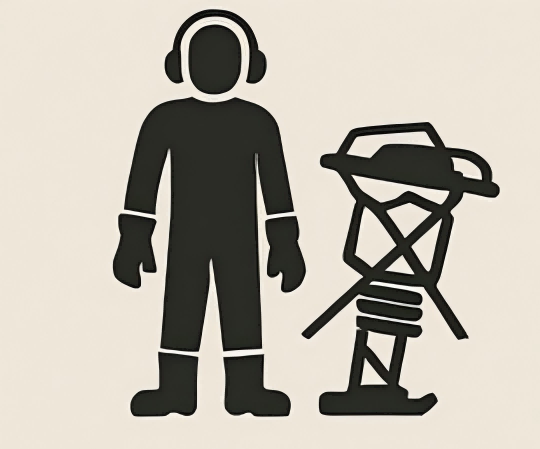
Skipping Safety Gear
Mistake:
Failing to wear personal protective equipment (PPE) like ear protection, gloves, and safety boots.
Why It’s a Problem:
Jumping jack compactors produce 95–105 dB(A) of noise and intense vibration. Long-term use without the appropriate PPE can cause hand-arm vibration syndrome (HAVS) and hearing impairment.
Safety Gear Checklist:
- Hearing protection (NRR 25+)
- Anti-vibration gloves
- Steel-toe boots
- Eye protection
Data:
NIOSH advises exposure to 100 dB(A) should not exceed 15 minutes daily without using proper hearing protection.
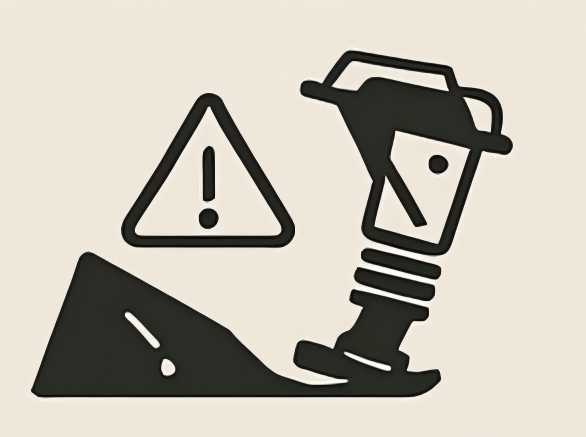
Operating on Slopes or Unstable Ground
Mistake:
Using jumping jacks on steep or unstable surfaces.
Why It’s a Problem:
Jumping jacks are not designed for slope stability and may tip over or become difficult to control.
Tip:
Limit operation to inclines under 20 degrees and always compact perpendicular to the slope when possible.
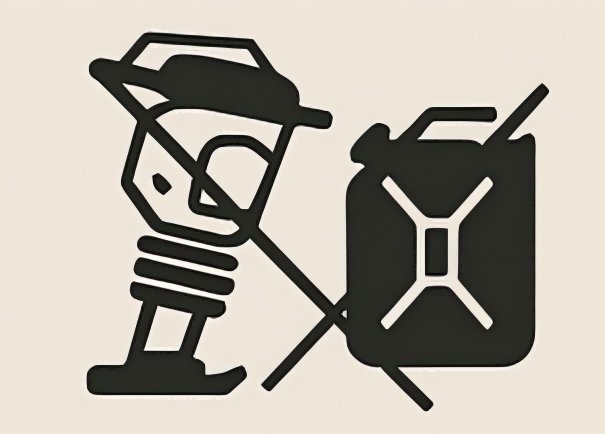
Overlapping or Skipping Passes
Mistake:
Not following a consistent pass pattern or failing to overlap passes sufficiently.
Why It’s a Problem:
Inconsistent coverage results in uneven compaction, weak spots, and possible structural failure.
Recommended Overlap:
2–4 inches (5–10 cm) per pass, depending on footplate width.
Example:
If your jumping jack has a foot width of 280 mm, ensure at least 40 mm overlap to maintain uniform compaction.
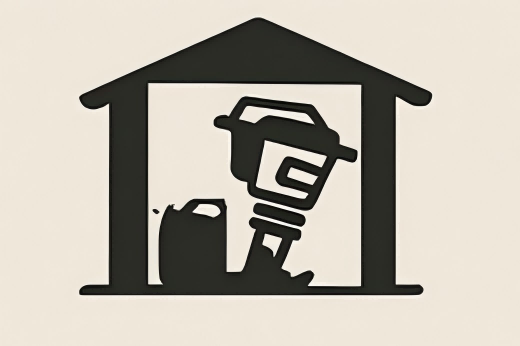
Running at Low Fuel or Oil Levels
Mistake:
Continuing to operate with low engine oil or running out of fuel.
Why It’s a Problem:
Low oil can cause engine seizure, and sudden fuel cutoff in 4-stroke engines may cause internal wear.
Engine Tip:
Check oil dipstick and fuel gauge before each use. Many models have a low-oil sensor, but not all shut down automatically.
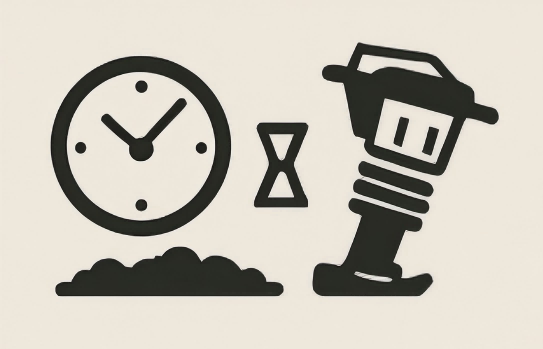
Storing the Compactor Incorrectly
Mistake:
Leaving the machine outdoors, in damp conditions, or with fuel in the tank for long periods.
Why It’s a Problem:
Exposure leads to rust, fuel degradation, and engine startup issues.
Storage Tip:
- Clean after use
- Empty fuel tank if stored >30 days
- Store in dry, covered area
- Use a fuel stabilizer if needed
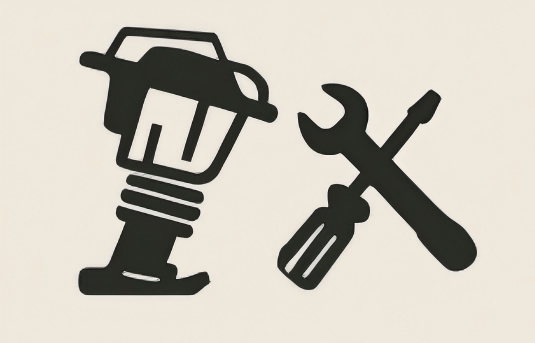
Ignoring Vibration Limits and Overuse
Mistake:
Overusing the machine in one area or running it continuously for long shifts.
Why It’s a Problem:
This can lead to soil over-compaction, machine overheating, and operator fatigue.
Time Management Tip:
- Compact in 4–6 inch (100–150 mm) lifts.
- Let soil “rest” after compacting.
- Limit runtime to 1 hour per operator followed by breaks.
Not Calibrating Stroke or Impact Force
Mistake:
Assuming factory settings are optimal for every job.
Why It’s a Problem:
Incorrect stroke settings may either fail to compact adequately or damage the soil structure.
Solution:
Adjust stroke or throttle settings based on soil density and lift thickness. Refer to manufacturer guidelines or consult on-site geotechnical engineers.
Using a jumping jack compactor effectively goes beyond simply turning it on and walking behind it. Success depends on soil compatibility, operator technique, machine maintenance, and safety practices. By avoiding the common mistakes outlined above, you can maximize compaction efficiency, reduce operational downtime, and extend the life of your equipment.
With proper care and attention to detail, jumping jack compactors can deliver high-density results in some of the most demanding construction environments. Whether you’re compacting for utility lines, foundation trenches, or confined job sites, the right approach makes all the difference.

